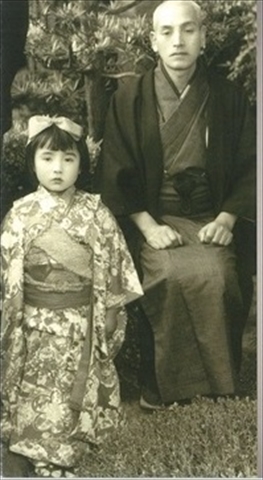シャトレーンとは「腰に提げる」ジュエリー。
Chatelaine is a jewerly for put on the waist.
このシャトレーンはアメリカ人アートプロデューサー、ヘレン・ドルトが企画した展覧会「Challenging the Chatraine!」のために制作した。 展覧会のコンセプトが「誰かに捧げる」だったため、この作品は祖父に捧げた。 展覧会はヘルシンキを皮切りに、世界数カ国を巡回し、フィラデルフィアの美術館で幕を閉じた。この作品は現在、エルミタージュ美術館に所蔵されている。
This Chatelaine was created for an exhibition “Challenging the Chatraine!”organized by American Art producer,Helen Drutt. This work was dedicated to grandfather because the concept of the exhibition was “dedicate to someone”. The exhibition started in Helsinki, traveled around the world, and closed at a museum in Philadelphia.This work was collected at the Hermitage Museum in Russia.
About Chatelaine Project
Motokichi Nishikawa (1897―1974)
Motokichi Nishikawa is my grandfather. He was born in 1897 to a family engaged in drapery-kimono business and spent his entire life wearing kimono. He was very fond of kimono and treated me with great affection.
After the end of the war, most of the Japanese, particularly the men, have worn western style clothes and kimono has been rarely worn. He loved kimono and even wore kimono at home. He did not possess western apparel of any kind. In fact, he spent his entire life of 77 years wearing kimono.
After the war, there was a dramatic transformation in Japan in practically all aspects of Japanese life, but he, having a resolute character, was unable to conform to these changes and stubbornly maintained his own aesthetic sense.
As my father had already passed away before I was born, it was my grandfather who was my guardian and served as my father in looking after my upbringing.
In preparing works of mine with the use of the daifukucho (transaction ledger of drapery-kimono business) maintained by his father (my great grandfather), I can appreciate and sense not only joy but also peace of mind.
I strongly feel that my point of origin is my early childhood life with my grandfather and consider that the figure of my grandfather in kimono is the best in Japan.
Kyoko Fukuchi



